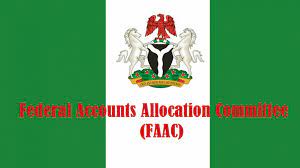Against market expectations, the Monetary Policy Committee (MPC), faced with the choice of reducing or leaving policy parameters unchanged, elected to reduce the Monetary Policy Rate (MPR) by 100bps to 11.5 per cent from 12.5 per cent.
This was made known by the Governor of the Central bank of Nigeria (CBN), Godwin Emefiele in a statement after the committee meeting in Abuja Tuesday.
According to him, the meeting also widened the asymmetric corridor around the MPR to +100/-700bps; retain the Cash Reserve Ratio (CRR) at 27.5%; and retain the Liquidity Ratio (LR) at 30.0%.
The decision marks the second rate cut in 2020 and brings the MPR to its lowest level since February 2016; the change to the asymmetric corridor is the first since March 2016.
Emefiele explained that of the ten committee members, six voted to cut rate by 100bps, one voted for a 50bps rate cut, while three voted to maintain the rate. While all members voted to retain the CRR and LR at their current levels, 9 members voted to change the Asymmetric corridor around the MPR while 1 member voted to leave it unchanged.
The key focus areas of the committee’s consideration were declining domestic output and upward pressure on domestic prices.
On domestic growth, the committee highlighted the negative growth rate experienced by the country in Q2-20 presented a policy dilemma and projected that the economy may continue to grapple with the effects of the pandemic throughout the rest of the year. The Committee, however, expects the economy to enter into a positive growth territory between Q4-20 and Q1-21 based on the anticipated positive results from the coordinated and sustained interventions by the Federal Government (FG) and the Central Bank of Nigeria (CBN).
On Inflation, the committee expressed that the current inflationary pressure is not due to monetary factors, rather, it reflects the impact of structural rigidities and supply chain challenges. Hence, traditional tools may not help address inflationary pressure. Instead, it will continue to favour supply-side measures to stimulate aggregate domestic production which will lower prices.
On private sector credit, the meeting expressed confidence in the strength of the banking sector despite the persistence of the COVID-19 pandemic. It also expressed satisfaction in the growth of credit to the private sector and urged the banks to do more. The Committee also highlighted the decline in the NPLs to 6.1% as at the end of August 2020 compared to 9.4% in the corresponding period of 2019 due to recoveries and write-offs.




